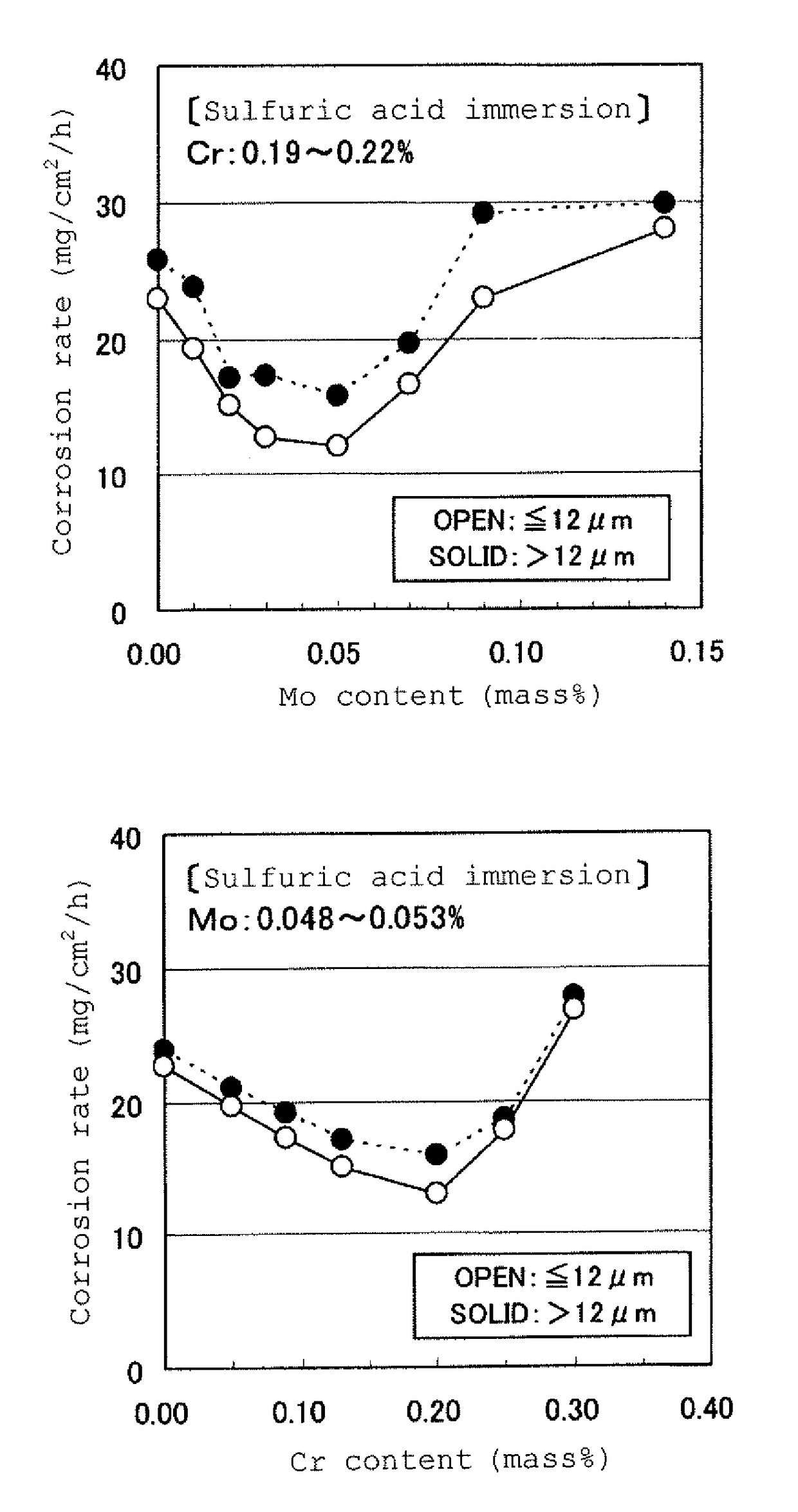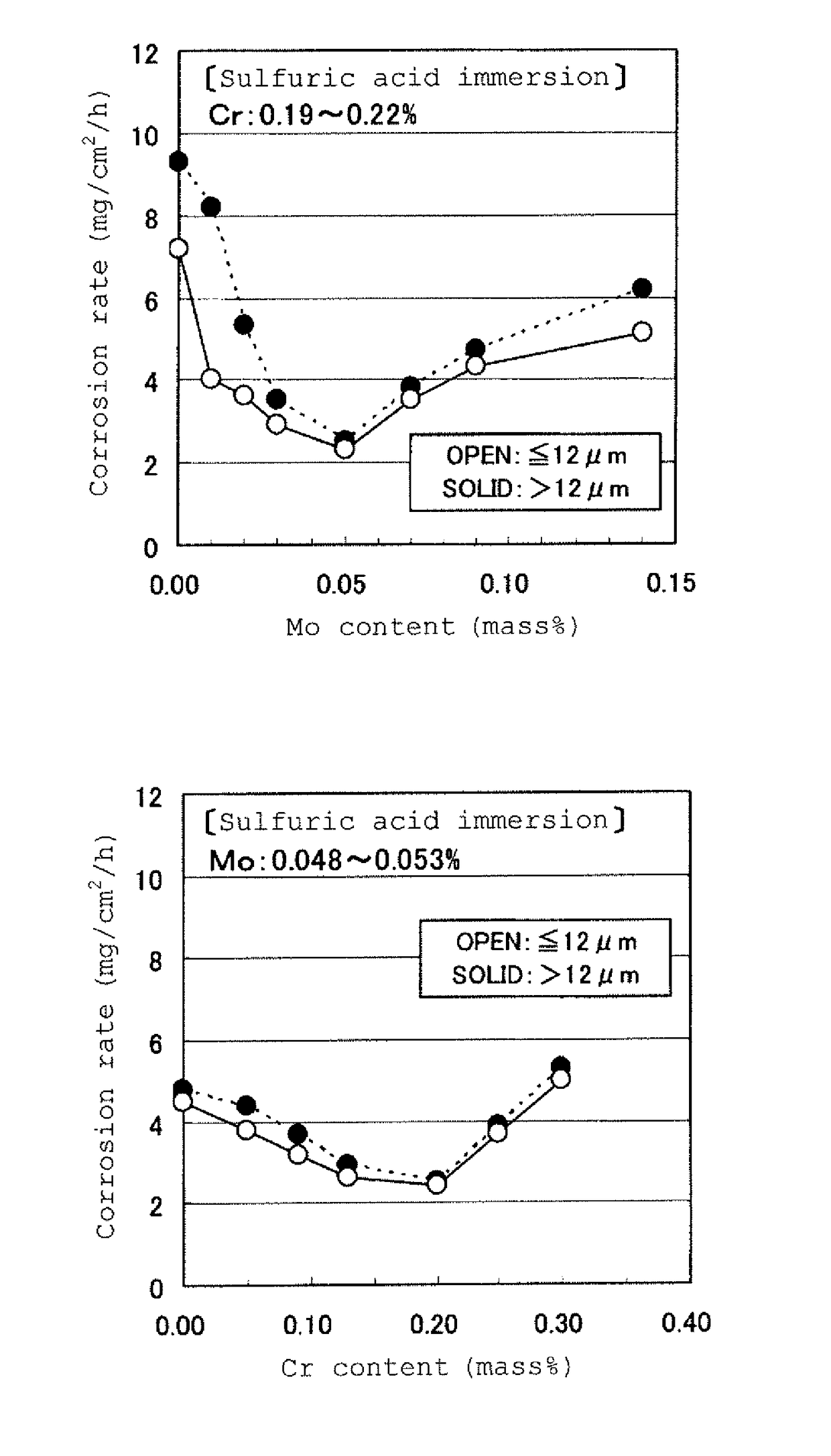Steel plate having excellent acid dew point corrosion resistance, method of production, and exhaust gas channel constituent member
- Summary
- Abstract
- Description
- Claims
- Application Information
AI Technical Summary
Benefits of technology
Problems solved by technology
Method used
Image
Examples
example
[0060]The steel species shown in Table 1 were prepared through melting, and subjected to hot rolling under a condition of an extraction temperature of 1,250° C., a finishing temperature of one of two levels, i.e., 920° C. and 860° C., and a coiling temperature of 550° C., so as to provide hot-rolled steel plates having a thickness of 2.0 mm. The resulting hot-rolled steel plates were subjected to acid cleaning for removing scales, and used as specimens.
TABLE 1SteelChemical composition (% by mass)No.CSiMnPSCuNiCrMoAlBalanceClass10.0400.280.870.0110.0120.280.150.200.0050.018—comparative steel20.0450.260.790.0130.0070.320.200.220.0100.033—steel of invention30.0430.310.880.0090.0090.310.150.210.0180.025—steel of invention40.0490.320.920.0120.0140.290.140.210.0300.024—steel of invention50.0430.280.870.0080.0140.290.140.200.0480.024—steel of invention60.0460.330.870.0090.0140.310.160.190.0700.034—steel of invention70.0340.290.810.0120.0090.290.150.200.0810.019—steel of invention80.0440.31...
example 2
[0067]The steel species Nos. 5 and 26 shown in Table 1 each were subjected to hot rolling at an extraction temperature of 1,250° C., a finish rolling temperature of 860° C., and a coiling temperature of 550° C. to provide hot-rolled steel plates having a thickness of 3.2 mm. Thereafter, the steel plates each were subjected to acid cleaning and cold rolling to provide cold-rolled steel plates having a thickness of 1.0 mm. The cold-rolled steel plates each were subjected to annealing in a continuous annealing and acid cleaning line under the following heating profiles A to C to provide acid-cleaned cold-rolled and annealed steel plates.
[0068](A) The steel plate was subjected to a soaking treatment at 680° C. for 60 seconds, then cooled to 450° C. at an average cooling rate of 10° C. / sec or more, and then retained in a temperature range of from 300 to 450° C. for 180 seconds.
[0069](B) The steel plate was subjected to a soaking treatment at 860° C. for 60 seconds, then cooled to 450° C....
PUM
| Property | Measurement | Unit |
|---|---|---|
| Temperature | aaaaa | aaaaa |
| Temperature | aaaaa | aaaaa |
| Temperature | aaaaa | aaaaa |
Abstract
Description
Claims
Application Information
 Login to View More
Login to View More - R&D
- Intellectual Property
- Life Sciences
- Materials
- Tech Scout
- Unparalleled Data Quality
- Higher Quality Content
- 60% Fewer Hallucinations
Browse by: Latest US Patents, China's latest patents, Technical Efficacy Thesaurus, Application Domain, Technology Topic, Popular Technical Reports.
© 2025 PatSnap. All rights reserved.Legal|Privacy policy|Modern Slavery Act Transparency Statement|Sitemap|About US| Contact US: help@patsnap.com


